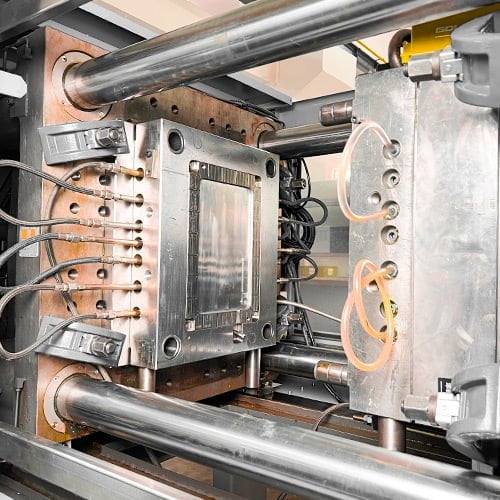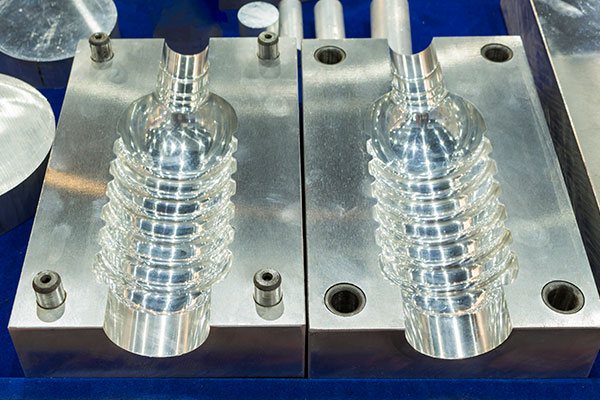The Influence of Plastic Injection Molding on Lowering Manufacturing Prices and Waste
Wiki Article
Recognizing the Essentials of Plastic Shot Molding Procedures
Plastic shot molding functions as a foundation of modern-day manufacturing, giving a methodical strategy to generating complicated elements with accuracy. This procedure not just encompasses the fundamental actions of melting and injecting products into mold and mildews however additionally includes a nuanced understanding of numerous affecting variables, such as temperature and stress. As industries progressively demand efficiency and top quality, the details of this method become more important. Checking out these essential aspects can expose how even minor changes can result in substantial renovations in manufacturing outcomes, elevating inquiries concerning the capacity for technology in this established process.What Is Plastic Shot Molding?
Plastic shot molding is a widely used production procedure that transforms polycarbonate and thermosetting products into exact and complicated forms. This method is preferred for its capacity to create high volumes of similar components with exceptional precision, making it an important approach in various markets, including vehicle, durable goods, and clinical devices.
The procedure entails melting the selected plastic material and injecting it right into a mold and mildew under high pressure. The mold, made to the specifications of the preferred part, permits the molten plastic to take shape as it cools down and strengthens. Once the product has actually hardened, the mold and mildew is opened up, and the ended up component is ejected.
Plastic shot molding provides numerous benefits, including minimized waste, uniformity in production, and the capability to integrate detailed layouts that may be challenging with various other producing approaches. Additionally, it supports a broad series of products, each giving distinct homes that can be customized for details applications. As markets proceed to introduce, plastic shot molding continues to be at the center, enabling the advancement of sophisticated items that fulfill developing consumer demands.
The Shot Molding Process
The shot molding procedure is an innovative strategy that entails numerous vital phases to produce premium plastic elements. Plastic pellets are fed right into a warmed barrel where they are melted into a viscous liquid. This molten plastic is after that infused under high pressure into a precision-engineered mold and mildew, which shapes the material right into the preferred form.Once the mold and mildew is filled up, the plastic is permitted to solidify and cool down, taking the form of the mold tooth cavity. Cooling time is vital, as it influences the cycle time and the last residential or commercial properties of the molded component. After enough cooling, the mold and mildew opens up, and the completed component is expelled using ejector pins.

Products Used in Injection Molding
Numerous products can be made use of in the injection molding process, each offering distinct buildings that accommodate particular applications. One of the most frequently made use of products consist of thermoplastics, thermosetting plastics, and elastomers.
Thermosetting plastics, like epoxy and phenolic resins, undertake a chemical modification throughout the healing process, causing a stiff, stringent structure. These products are suitable for applications requiring high warm resistance and structural honesty, commonly used in automotive parts and electrical insulators.
Elastomers, consisting of silicone and rubber-based materials, give versatility and strength. Their unique residential or commercial properties make them ideal for applications that demand elasticity, such as gaskets and seals.
Furthermore, specialized products like bio-based plastics and compounds are acquiring traction for their ecological benefits and improved efficiency features, broadening the range of injection molding applications in various markets. Recognizing the residential properties of these products is essential for choosing the proper kind for particular jobs.
Benefits of Shot Molding
Shot molding stands out as an extremely effective manufacturing process that uses countless advantages for producing complex parts with precision. dig this One of the most significant benefits is the capability to develop complex styles that would be tough or difficult to accomplish with various other methods (Plastic Injection Molding). The process enables comprehensive attributes and limited tolerances, making certain high-grade componentsAdditionally, shot molding is known for its rapid production abilities, making it a perfect choice for high-volume production. Once the mold and mildew is produced, parts can be generated promptly, minimizing lead times and increasing overall productivity. This performance not just lowers production costs but additionally supplies a competitive edge in the market.
The convenience of products used in injection molding additionally enhances its allure. A large range of thermoplastics and thermosetting polymers can be used, allowing manufacturers to select products that best fulfill their particular requirements, consisting of stamina, heat, and adaptability resistance.
Furthermore, the procedure minimizes waste, as excess useful link material can frequently be reused and recycled. This sustainability aspect adds to a decreased environmental influence, making injection molding a responsible manufacturing option. In general, the benefits of injection molding make it a favored technique for numerous sectors.
Factors Impacting Item High Quality
While various factors can influence item quality in injection molding, understanding these components is critical for accomplishing optimum outcomes. Key elements consist of product choice, processing specifications, and mold design.Material selection plays a crucial function, as different polymers exhibit unique homes that affect flowability, strength, and thermal stability. Inadequate product selection important source can bring about issues such as bending or incomplete dental filling.
Handling parameters, including temperature, pressure, and cycle time, need to be diligently controlled. Variants in these setups can lead to disparities in part dimensions and surface coating. Excessively high temperature levels may trigger degradation of the polymer, while inadequate stress can result in short shots.
Mold design is just as crucial, as it identifies the flow of the molten plastic and the cooling process. Inadequately created molds might cause uneven air conditioning rates, causing dimensional mistakes and residual anxieties.

Verdict
Finally, plastic shot molding works as a crucial manufacturing process that enables the efficient manufacturing of top notch elements. Mastery of the injection molding procedure, consisting of the understanding of materials and the impact of various elements on item high quality, is necessary for accomplishing optimum outcomes. The advantages of this method, such as cost-effectiveness and style adaptability, additional highlight its significance across numerous sectors, strengthening its condition as a preferred selection for high-volume production.Plastic shot molding offers as a foundation of modern manufacturing, offering a systematic technique to producing complex parts with precision.Plastic shot molding offers several benefits, consisting of decreased waste, consistency in manufacturing, and the ability to incorporate detailed layouts that may be testing with other manufacturing approaches (Plastic Injection Molding). As markets continue to introduce, plastic injection molding remains at the forefront, making it possible for the advancement of advanced items that satisfy evolving customer needs
The shot molding procedure is an innovative technique that entails several vital stages to generate premium plastic components.In conclusion, plastic shot molding serves as an important manufacturing process that allows the efficient manufacturing of top quality elements.
Report this wiki page